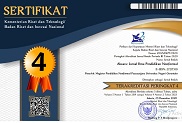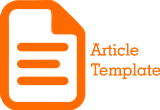Genre Analysis of Memo from Headmaster to Teachers
Abstract
Discourse analysis has always been a great tool for analyzing both spoken and written discourses in various discourse communities. Specifically, it has largely been used for written discourse analysis. For instance, it has been used in analysis of memos. Memos have been a valuable part of written discourse in different settings. Thus, this paper is the analysis of a memo written by a school headmaster. The author used Genre Analysis as a discourse analysis for analyzing the memo text in this paper. Although there are several models for genre analysis, Genre Analysis of Vijay. K Bhatia Model has been used in this study. The findings revealed that the memo was related to a professional genre of school while meeting not the entire characteristics of professional genre. The research suggested that future studies be conducted concerning memo analysis.
Keywords
Full Text:
PDFReferences
Arancón, P. R. (2013). New applications of genre analysis to technical manuals: the
perspective of bhatian and lassen model (2012, A. Felices Lago and D.
Fernández Lloret). RAEL: revista electrónica de lingüÃstica aplicada(12),
-180.
Banks, D. (2008). The Development of Scientific Writing. Linguistic features and
historical context: Equinox.
Bhatia, V. K., & Genre, A. (1993). Language use in professional settings. Applied
Linguistics and Language Study.) London: Longman.
Flowerdew, J., & Dudleyâ€Evans, T. (2002). Genre analysis of editorial letters to
international journal contributors. Applied linguistics, 23(4), 463-489.
Flowerdew, J., & Peacock, M. (2001). Research perspectives on English for
academic purposes: Ernst Klett Sprachen.
Halliday, M., Matthiessen, C. M., & Matthiessen, C. (2014). An introduction to
functional grammar: Routledge.
Halliday, M. A. (2004). The spoken language corpus: A foundation for grammatical
theory. Language and Computers, 49, 11-38.
Halliday, M. A. K., Matthiessen, C., & Halliday, M. (2014). An introduction to
functional grammar: Routledge.
Martin, J. R. (1984). Language, register and genre. Children writing: reader, 1, 984.
Paltridge, B. (2012). Discourse analysis: An introduction: Bloomsbury Publishing.
Redish, J. C. (1989). Reading to learn to do. IEEE transactions on professional
communication, 32(4), 289-293.
Singh, M. K. S., Shamsudin, S., & Zaid, Y. H. (2012). Revisiting Genre Analysis:
Applying Vijay Bhatia 's Approach. Procedia-Social and Behavioral
Sciences, 66, 370-379.
Swales, J. (1990). Genre analysis: English in academic and research settings:
Cambridge University Press.
Singh, M. K. S., Shamsudin, S., & Zaid, Y. H. (2012). Revisiting Genre Analysis:
Applying Vijay Bhatia's Approach. Procedia-Social and Behavioral
Sciences, 66, 370-379.
Swales, J. (1990). Genre analysis: English in academic and research settings:
Cambridge University Press.
Trosborg,A.(2000) Discourse Analysis as Part of Translator's Training. Arthus V :
Denmark. Zellig, H. (1952). Discourse analysis. Language, 28(1), 1-30.
DOI: http://dx.doi.org/10.37905/aksara.7.3.771-780.2021
Refbacks
- There are currently no refbacks.
Copyright (c) 2021 Aksara: Jurnal Ilmu Pendidikan Nonformal

This work is licensed under a Creative Commons Attribution-ShareAlike 4.0 International License.
Publisher:
Magister Pendidikan Nonformal Pascasarjana Universitas Negeri Gorontalo
Jl. Soedirman No. 06 Gorontalo 96128 e-mail: jurnalaksara@ung.ac.id
http://ejurnal.pps.ung.ac.id







